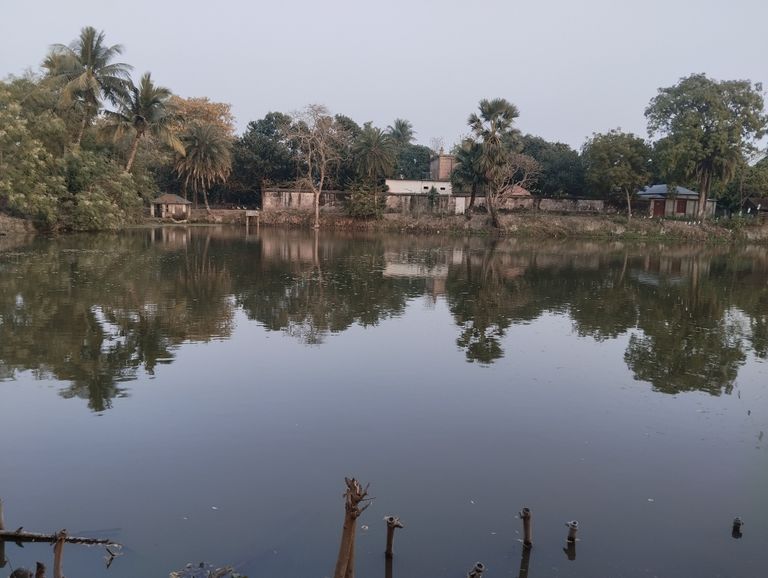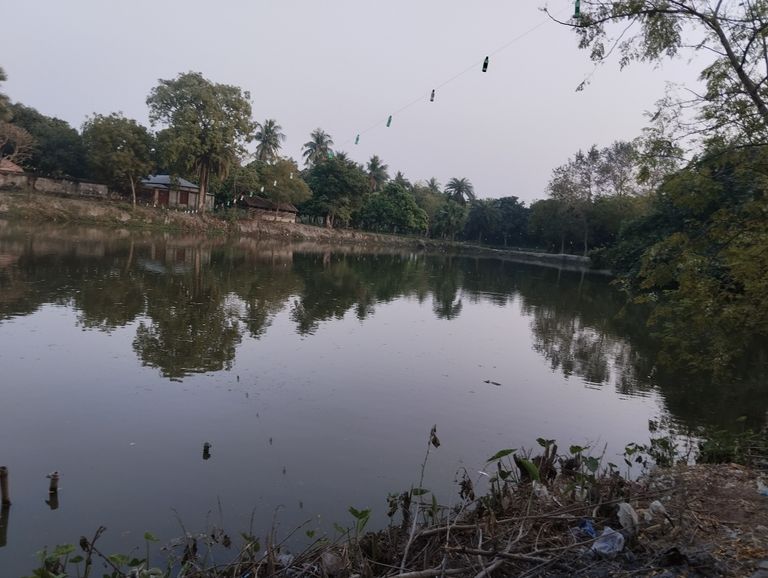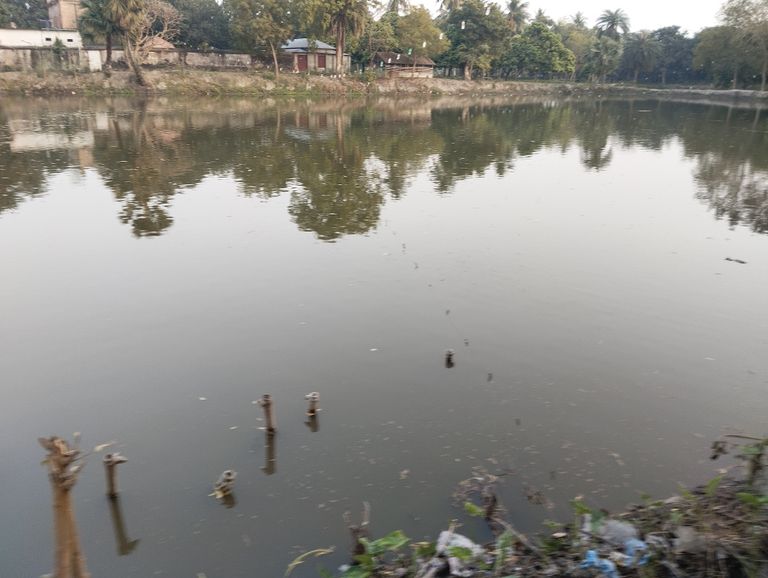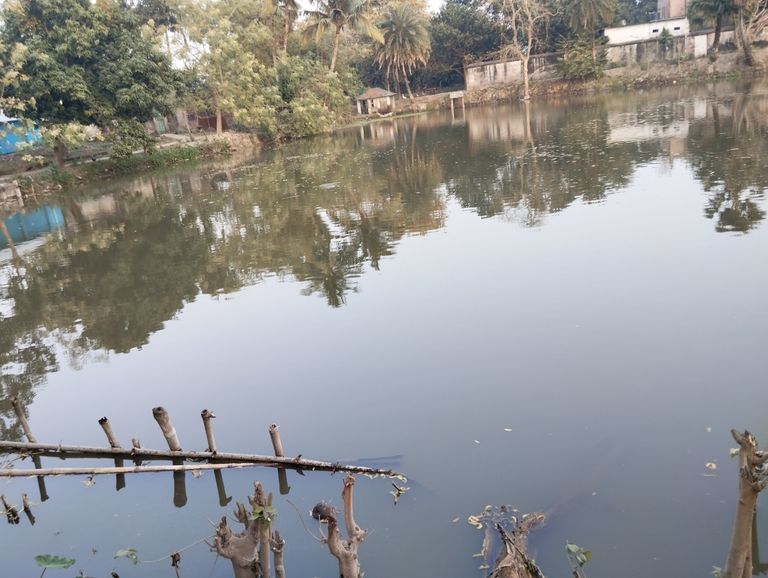
Fish Farming in Ponds A Comprehensive Guide.
Fish farming in ponds is a profitable and sustainable way to produce fish for consumption and trade. It is widely practiced worldwide, especially in countries with abundant freshwater resources. This guide provides a detailed overview of pond fish farming, covering everything from pond preparation to harvesting and marketing.
- Benefits of Fish Farming in Ponds
Pond fish farming offers numerous advantages:
Profitability: A well-maintained pond can yield a high return on investment.
Food Security: Provides a steady source of protein for families and communities.
Sustainability: Proper management ensures long-term production without harming the environment.
Employment: Creates job opportunities in rural and semi-urban areas.
- Selecting the Right Fish Species
Choosing the right fish species is crucial for successful fish farming. Commonly farmed fish species include:
a. Carp Fish
Rohu (Labeo rohita)
Catla (Catla catla)
Mrigal (Cirrhinus mrigala)
b. Tilapia
Fast-growing and disease-resistant
Suitable for commercial farming
c. Catfish
High demand in the market
Can survive in low oxygen conditions
d. Prawns and Shrimp
More profitable but require advanced farming techniques
- Pond Selection and Construction
A properly designed pond enhances fish growth and minimizes losses.
a. Site Selection
Choose a location with a natural water source (river, lake, or groundwater).
Avoid areas prone to flooding or pollution.
b. Pond Design
Size: Typically 0.1 to 1 hectare, depending on investment and space availability.
Depth: 1.5 to 2.5 meters is ideal for most fish species.
Slope: The pond should have a gentle slope to facilitate drainage and maintenance.
c. Water Management
Maintain good water quality by controlling pH (6.5-8.5) and dissolved oxygen levels.
Regularly remove excess organic matter to prevent water pollution.
- Pond Preparation and Stocking
a. Pond Preparation
Lime Application: Apply agricultural lime (CaCO₃) to neutralize acidity and promote beneficial bacteria.
Fertilization: Use organic or inorganic fertilizers to enhance natural fish food production.
Water Filling: Fill the pond gradually and allow it to stabilize before stocking fish.
b. Stocking Fish
Select healthy fingerlings from reputable hatcheries.
Stock at appropriate densities (e.g., 5000-10,000 fish per hectare, depending on species).
Introduce fish in early morning or late afternoon to reduce stress.
- Feeding and Nutrition
Proper feeding ensures rapid growth and high yield.
a. Natural Food Sources
Phytoplankton and zooplankton (enhanced by fertilization)
Aquatic insects and organic debris
b. Supplemental Feeding
Use commercial fish feed with balanced protein, fat, and carbohydrates.
Feed fish 2-3 times a day at a fixed schedule.
Avoid overfeeding to prevent water pollution.
- Pond Maintenance and Disease Control
Regular monitoring helps prevent diseases and maintain productivity.
a. Water Quality Management
Test water regularly for pH, oxygen levels, and ammonia content.
Use aeration systems if oxygen levels drop.
b. Disease Prevention
Quarantine new fish before introducing them into the pond.
Use probiotics and natural disease control methods.
Remove sick or dead fish immediately.
c. Predator and Pest Control
Install netting or fencing to prevent birds and animals from attacking fish.
Use biological control methods (e.g., introducing predator-resistant fish species).
- Harvesting and Marketing
a. Harvesting Techniques
Partial Harvesting: Harvest mature fish while allowing smaller fish to grow.
Complete Harvesting: Drain the pond completely and collect all fish.
b. Post-Harvest Handling
Store fish in ice to maintain freshness.
Process and package fish properly for transportation.
c. Marketing Strategies
Sell directly to local markets, supermarkets, or restaurants.
Export to international markets if feasible.
Promote fish sales through social media and online platforms.
- Economic Aspects of Fish Farming
a. Investment and Cost Analysis
Initial Costs: Land preparation, pond construction, stocking, and feeding.
Operational Costs: Feeding, maintenance, labor, and disease management.
Revenue: Depends on fish type, market price, and production yield.
b. Profitability Calculation Example
- Challenges in Pond Fish Farming
a. Common Problems
Water pollution and poor quality management.
High feed costs.
Disease outbreaks and fish mortality.
Market price fluctuations.
b. Solutions
Use organic and homemade feeds to reduce costs.
Regularly test and treat water quality issues.
Diversify fish species to ensure stable market demand.
- Future Prospects of Fish Farming
Pond fish farming has a promising future due to the increasing global demand for fish. Advances in aquaculture technology, sustainable practices, and government support make it a lucrative business. Entrepreneurs and farmers should invest in training, adopt innovative techniques, and explore new markets to maximize profitability.
Fish farming in ponds is a rewarding and profitable business when managed correctly. By following proper pond preparation, stocking, feeding, and maintenance techniques, farmers can achieve high yields and sustainable income. Whether for small-scale subsistence farming or large commercial ventures, investing in pond fish farming can lead to long-term success.

Care and Maintenance of Fish Fingerlings
Fish farming is an important sector of aquaculture, and the proper care of fish fingerlings is crucial for a successful harvest. Fingerlings are young fish that have reached a stage where they can be transferred to larger water bodies for further growth. Ensuring their health, nutrition, and proper environmental conditions is essential for maximizing survival rates and overall productivity.
- Selection of Healthy Fingerlings
The first step in ensuring good care of fish fingerlings is selecting high-quality and healthy ones. Here are some factors to consider when selecting fingerlings:
Active Movement: Healthy fingerlings swim actively and respond to stimuli.
Bright Body Color: The skin should be shiny and free from spots or infections.
Uniform Size: Choose fingerlings of similar sizes to prevent cannibalism and competition for food.
Disease-Free: Check for signs of infections, parasites, or deformities.
Purchasing fingerlings from a reputable hatchery ensures a higher survival rate and reduces disease risks.
- Proper Acclimatization
Before transferring fingerlings to ponds or tanks, they must be properly acclimatized to avoid stress and shock. Follow these steps for smooth acclimatization:
Temperature Adjustment: Place the fingerlings in a container with their transport water and gradually add water from the pond or tank. This helps them adjust to temperature changes.
pH Balancing: Sudden changes in pH can be fatal. Ensure a gradual shift by mixing water slowly.
Oxygen Supply: Keep aeration running during acclimatization to ensure adequate oxygen levels.
Slow Release: Instead of pouring fingerlings directly, allow them to swim out of the container on their own.
- Water Quality Management
Maintaining optimal water quality is one of the most crucial aspects of fingerling care. Poor water quality can lead to diseases, stunted growth, and mortality. The following parameters should be monitored regularly:
a. Dissolved Oxygen (DO)
Maintain a DO level of 5-8 mg/L.
Install aerators in ponds and ensure good water circulation.
Avoid overstocking to prevent oxygen depletion.
b. pH Levels
Keep the pH between 6.5 and 8.5.
Use lime to raise pH and organic matter to lower it if needed.
c. Ammonia and Nitrite Control
High levels of ammonia and nitrites can be toxic.
Avoid excessive feeding, and perform regular water changes.
d. Water Temperature
Maintain an optimal temperature range (varies depending on fish species).
Protect ponds from extreme heat and cold conditions.
Regular water testing helps maintain a healthy environment for fingerlings.
- Feeding and Nutrition
Proper feeding is essential for the healthy growth of fish fingerlings. Here are some key points for effective feeding management:
a. Types of Feed
Starter Feed: High-protein pellets (30-40% protein) are ideal for early-stage growth.
Live Feed: Zooplankton, daphnia, and brine shrimp can supplement nutrition.
Commercial Pellets: Formulated feed with essential vitamins and minerals ensures balanced nutrition.
b. Feeding Frequency
Feed fingerlings 3-5 times daily in small portions.
Avoid overfeeding, as leftover food can pollute the water.
c. Feeding Techniques
Spread feed evenly across the water surface.
Use automatic feeders in larger ponds for consistency.
Observe fish behavior to adjust feeding amounts.
- Disease Prevention and Health Management
Diseases can severely impact fingerling survival rates. Preventive measures should be taken to reduce risks:
a. Common Fish Diseases
- Fungal Infections: Appear as white patches on the body.
- Bacterial Infections: Symptoms include fin rot, ulcers, and lethargy.
- Parasitic Infestations: Protozoa and worms can cause stress and weakness.
b. Prevention Methods
Quarantine New Fingerlings: Before introducing them to the main pond.
Maintain Clean Water: Regularly remove debris and waste.
Use Natural Remedies: Garlic and salt baths can help reduce infections.
Regular Health Checks: Inspect fish daily for unusual behavior or signs of illness.
If diseases are detected, consult an aquaculture expert for proper treatment.
- Stocking Density and Growth Monitoring
Overcrowding can lead to stress, competition for food, and stunted growth. Maintaining proper stocking density ensures better survival rates.
Recommended Density:
Tilapia: 5-10 fish per square meter
Catfish: 10-15 fish per square meter
Carp: 4-8 fish per square meter
Growth Monitoring:
Weigh and measure fingerlings every 2 weeks.
Adjust feeding and stocking density based on growth rates.
Monitoring helps in making informed decisions for harvesting and further management.
- Pond and Tank Maintenance
Keeping the environment clean reduces stress and disease outbreaks.
Regular Water Exchange: Change 20-30% of the water weekly.
Remove Excess Organic Waste: Decaying leaves and uneaten food should be removed.
Control Algae Growth: Too much algae can deplete oxygen at night.
Check for Leaks or Structural Damage: Repair any cracks in tanks or pond walls.
Good pond maintenance ensures optimal conditions for fingerling growth.
- Handling and Transportation
When moving fingerlings from one location to another, follow these best practices:
Use Oxygen Bags: Transport fingerlings in oxygenated plastic bags for long distances.
Reduce Handling Stress: Avoid frequent netting, and handle fish gently.
Transport During Cool Hours: Early morning or late evening is best to prevent temperature shock.
Keep Transport Duration Short: Minimize travel time to reduce stress and mortality.
Proper handling ensures minimal losses during stocking and transportation.
Caring for fish fingerlings requires attention to selection, acclimatization, water quality, nutrition, disease prevention, and pond maintenance. By following these guidelines, fish farmers can improve survival rates and optimize growth for a successful harvest. Investing in good care practices at the fingerling stage leads to higher profits and sustainable fish farming operations. Would you like additional details on specific fish species or farming methods? Let me know how I can help.

The Importance of Applying Lime in Ponds
Lime is a crucial component in fish farming, playing a significant role in maintaining water quality and ensuring a healthy environment for aquatic life. Applying lime to ponds helps regulate pH levels, enhances water productivity, and controls harmful pathogens. In this blog, we will discuss the benefits, types, application methods, and best practices for using lime in fish ponds.
Why is Lime Used in Ponds?
Applying lime in ponds serves several essential purposes, including:
- pH Regulation
Lime helps stabilize the pH level of pond water. If the water is too acidic, it can be harmful to fish, plankton, and other aquatic organisms. Lime neutralizes acidity and maintains an optimal pH range (6.5–8.5) for fish growth.
- Enhancing Water Productivity
Lime increases the availability of essential nutrients like phosphorus, which boosts the growth of plankton. Plankton serves as a natural food source for fish, improving their growth rate and overall pond productivity.
- Controlling Harmful Microorganisms
Lime acts as a disinfectant by reducing harmful bacteria, fungi, and parasites in the pond water and soil. This lowers the risk of fish diseases and improves survival rates.
- Improving Soil Quality
Pond bottoms often accumulate organic waste, leading to the formation of toxic gases like ammonia and hydrogen sulfide. Lime helps break down organic matter and neutralizes these toxic compounds, making the pond environment safer for fish.
Types of Lime Used in Ponds
Different types of lime are used in aquaculture, depending on the specific needs of the pond. The most common types include:
- Agricultural Lime (Calcium Carbonate – CaCO₃)
Used to neutralize acidity and improve soil quality.
Slow-reacting but provides long-term benefits.
- Quick Lime (Calcium Oxide – CaO)
Highly reactive and used for rapid pH correction.
Should be applied carefully as excessive use can harm fish.
- Slaked Lime (Calcium Hydroxide – Ca(OH)₂)
More reactive than agricultural lime but less aggressive than quick lime.
Used to disinfect pond water and control pathogens.
How to Apply Lime in Ponds
The application of lime depends on the condition of the pond, its pH level, and the type of soil. Here’s a step-by-step guide:
- Pre-Stocking Lime Application
Before stocking fish, apply lime to the dry pond bottom.
The recommended dosage is 250–1,000 kg per hectare, depending on soil acidity.
Spread lime evenly and allow it to react for 1–2 weeks before filling the pond with water.
- Regular Lime Application
After the pond is filled, lime can be applied at a lower rate to maintain water quality.
The typical dosage is 200–300 kg per hectare per year, applied in multiple intervals.
Distribute lime evenly over the pond surface, preferably in the morning.
- Disease Control and Emergency Use
If fish show signs of disease, slaked lime (Ca(OH)₂) can be used to disinfect the water.
Apply 100–200 kg per hectare as needed, ensuring proper aeration.
Best Practices for Lime Application
To maximize the benefits of liming, follow these best practices:
- Conduct Water and Soil Testing
Test the pH of pond water and soil before applying lime.
Use the appropriate type and quantity of lime based on test results.
- Apply During Dry Periods
Applying lime to a dry pond bottom ensures better absorption and effectiveness.
If applied to water, dissolve lime in buckets and sprinkle evenly.
- Avoid Overuse
Excessive liming can lead to excessively high pH, harming fish and aquatic plants.
Monitor pH levels regularly to maintain balance.
- Combine with Organic Fertilizers
Lime improves the efficiency of fertilizers by releasing bound nutrients in the soil.
Apply lime and fertilizers in separate intervals to maximize their effects.
Conclusion
Applying lime to fish ponds is an essential practice for maintaining water quality, improving productivity, and ensuring a healthy environment for fish. By understanding the different types of lime, application methods, and best practices, fish farmers can enhance their yields and reduce disease risks. Regular monitoring and proper liming techniques will contribute to a more sustainable and profitable fish farming operation. Would you like a more detailed guide on lime application for specific fish species? Let me know.

The Importance of Applying Lime in Ponds
Lime is a crucial component in fish farming, playing a significant role in maintaining water quality and ensuring a healthy environment for aquatic life. Applying lime to ponds helps regulate pH levels, enhances water productivity, and controls harmful pathogens. In this blog, we will discuss the benefits, types, application methods, and best practices for using lime in fish ponds.
Why is Lime Used in Ponds?
Applying lime in ponds serves several essential purposes, including:
- pH Regulation
Lime helps stabilize the pH level of pond water. If the water is too acidic, it can be harmful to fish, plankton, and other aquatic organisms. Lime neutralizes acidity and maintains an optimal pH range (6.5–8.5) for fish growth.
- Enhancing Water Productivity
Lime increases the availability of essential nutrients like phosphorus, which boosts the growth of plankton. Plankton serves as a natural food source for fish, improving their growth rate and overall pond productivity.
- Controlling Harmful Microorganisms
Lime acts as a disinfectant by reducing harmful bacteria, fungi, and parasites in the pond water and soil. This lowers the risk of fish diseases and improves survival rates.
- Improving Soil Quality
Pond bottoms often accumulate organic waste, leading to the formation of toxic gases like ammonia and hydrogen sulfide. Lime helps break down organic matter and neutralizes these toxic compounds, making the pond environment safer for fish.
Types of Lime Used in Ponds
Different types of lime are used in aquaculture, depending on the specific needs of the pond. The most common types include:
- Agricultural Lime (Calcium Carbonate – CaCO₃)
Used to neutralize acidity and improve soil quality.
Slow-reacting but provides long-term benefits.
- Quick Lime (Calcium Oxide – CaO)
Highly reactive and used for rapid pH correction.
Should be applied carefully as excessive use can harm fish.
- Slaked Lime (Calcium Hydroxide – Ca(OH)₂)
More reactive than agricultural lime but less aggressive than quick lime.